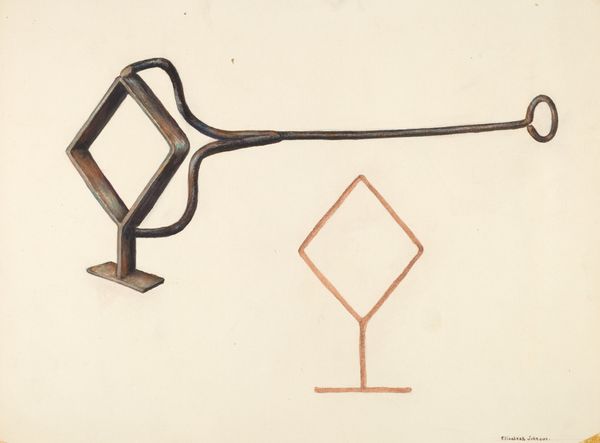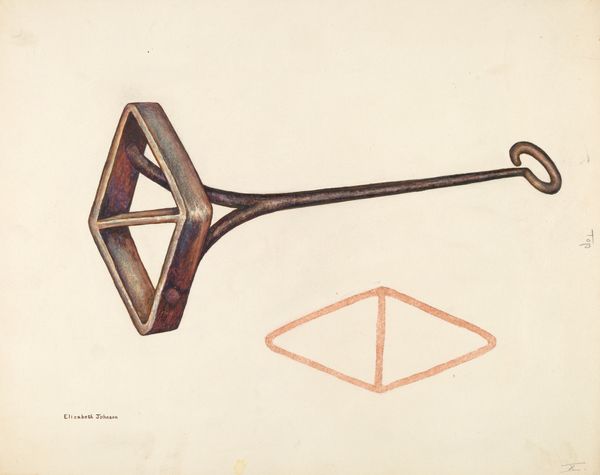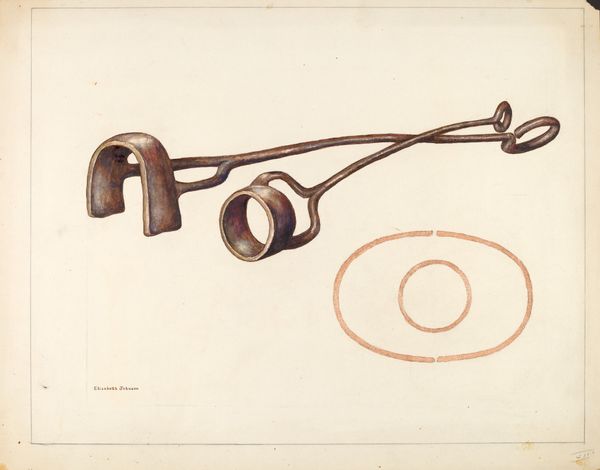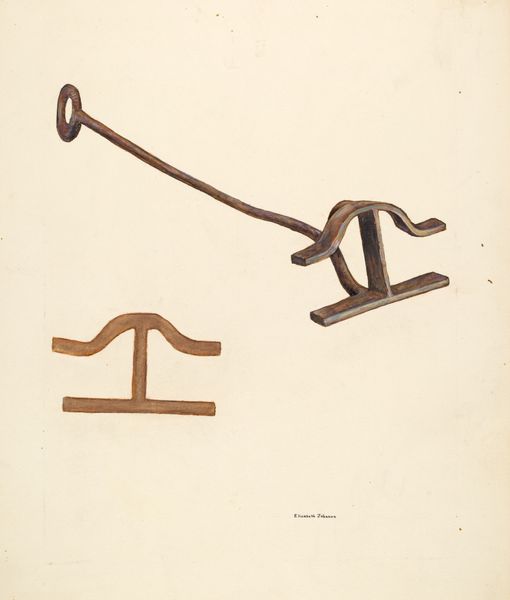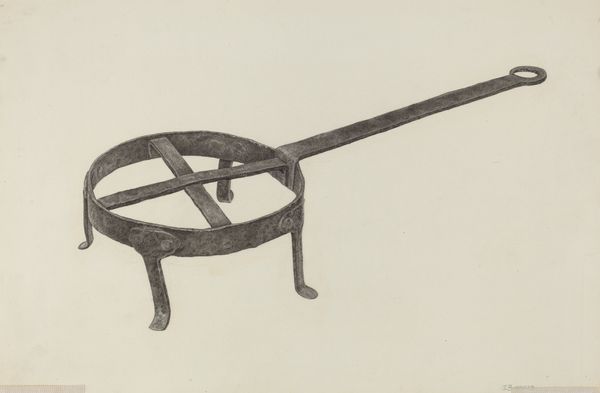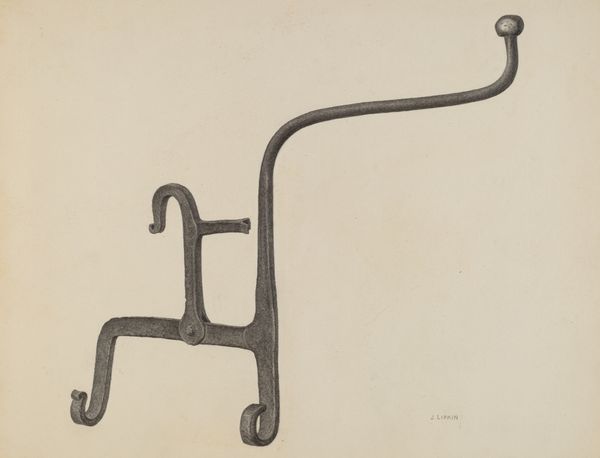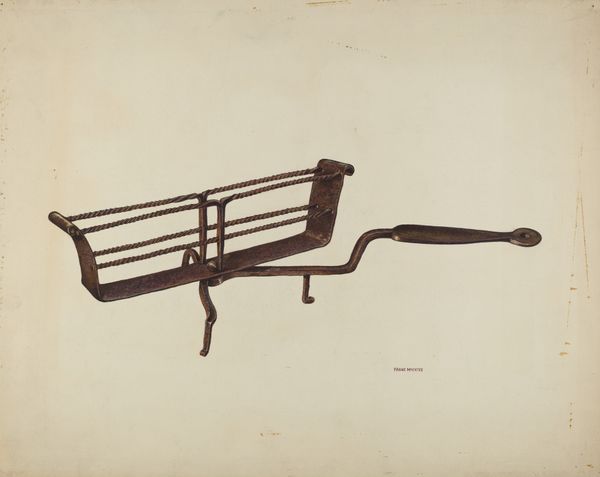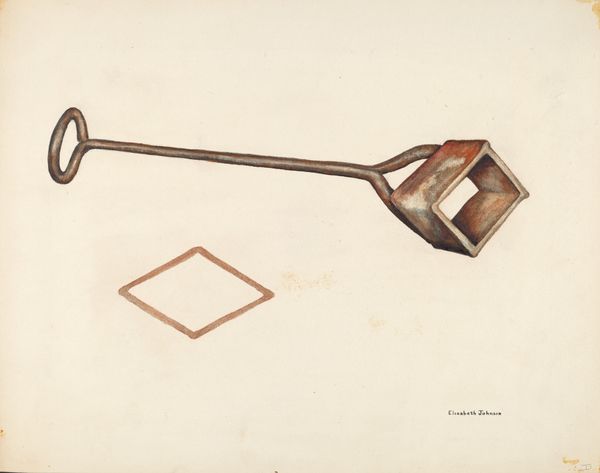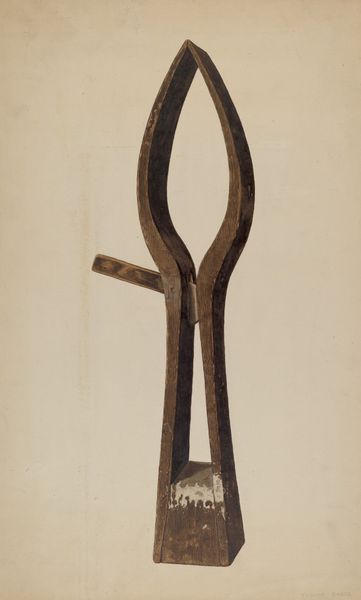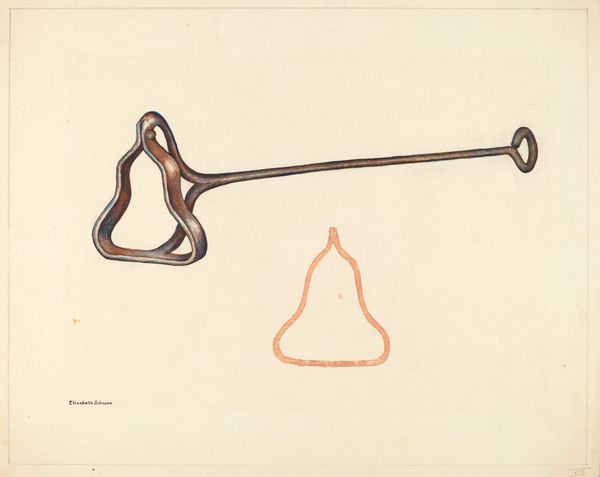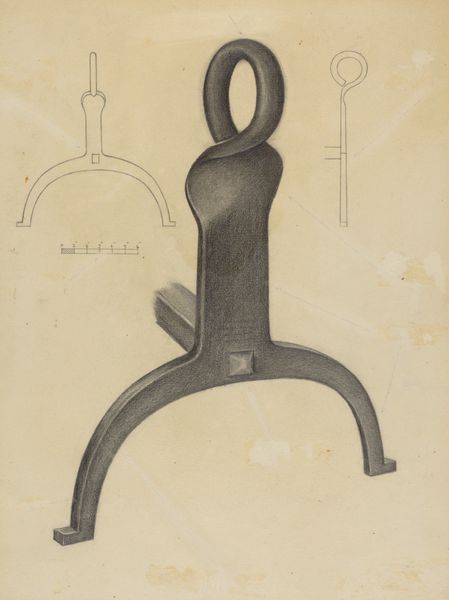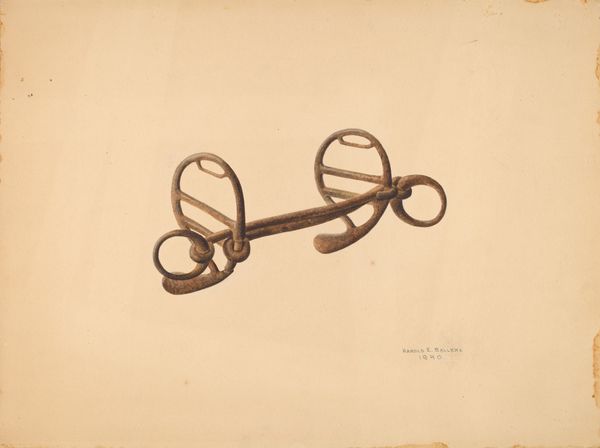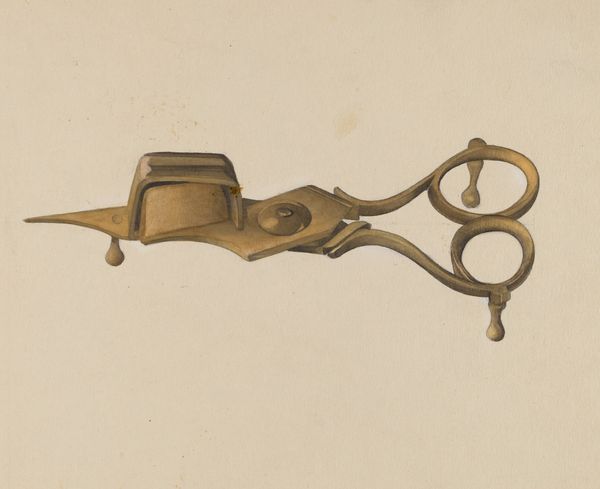
drawing, watercolor
#
drawing
#
watercolor
#
watercolour illustration
#
realism
Dimensions: overall: 28 x 35.5 cm (11 x 14 in.) Original IAD Object: 34" long
Copyright: National Gallery of Art: CC0 1.0
Editor: So, here we have Elizabeth Johnson's "Branding Iron," a watercolor and drawing made around 1942. It feels stark to me, almost like a document rather than a celebration. What do you see in this piece? Curator: I see a powerful commentary on ownership and control. Branding irons were, and are, tools of marking, a visual language of dominance over livestock and, by extension, the land itself. How might this relate to the identity and gender of its artist, made during wartime, far removed from ranching, and what commentary is offered in the outline of the glass? Editor: It’s interesting that you point out the artist’s perspective as a woman, during wartime. The tool itself is rendered realistically but is shown with the ghost of another. The contrast, almost a doubling, between the solid and the outline, is provocative, but what do we do with the ghost of a wine glass instead of cattle or horses? Curator: Exactly. The ghost offers us a way to contemplate shifting societal values through symbols of place and personhood: What is worth protecting, then or now? Where would you position that tension with other examples of modern art preoccupied with national and individual identity? Editor: I guess I hadn't considered how much this piece challenges our assumptions. I was initially put off by the seeming lack of color or personality, but the more we discuss it, the more layers I uncover related to broader systems of power and shifting gender norms in our cultural artifacts. Thank you. Curator: The impact is indeed revealed when we allow art to lead us into a wider consideration of history, gendered identities, and power structures, which can then promote change.
Comments
No comments
Be the first to comment and join the conversation on the ultimate creative platform.
